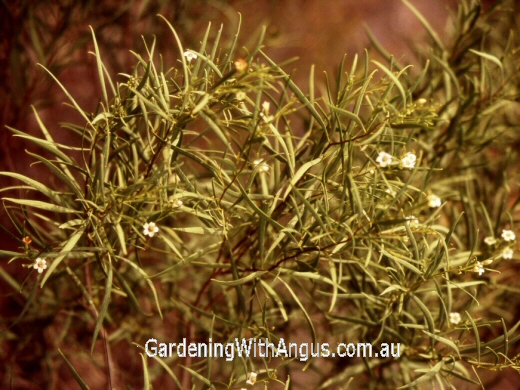A medium to large shrub growing naturally in inland regions, well suited to arid areas. Grows well in cultivation and makes a useful screen, plants stand up to cutting. Bears white, bell-shaped flowers with purple stripes in the throat, from winter to spring in its natural range.
An important plant for Aborigines, the powdered leaves and twigs are chewed for their effect on the body. Produces a narcotic effect due to the presence of nicotine alkaloids, and suppresses hunger. The plant goes through a particular preparation process for this, and only plants from specific areas are used for humans due to the differing levels of safe or poisonous alkaloids in plants from different areas. The leaves are poisonous to stock animals and camels.
Picture provided by Philip Clarke, from his new book Discovering Aboriginal Plant Use: Journeys of an Australian Anthropologist

